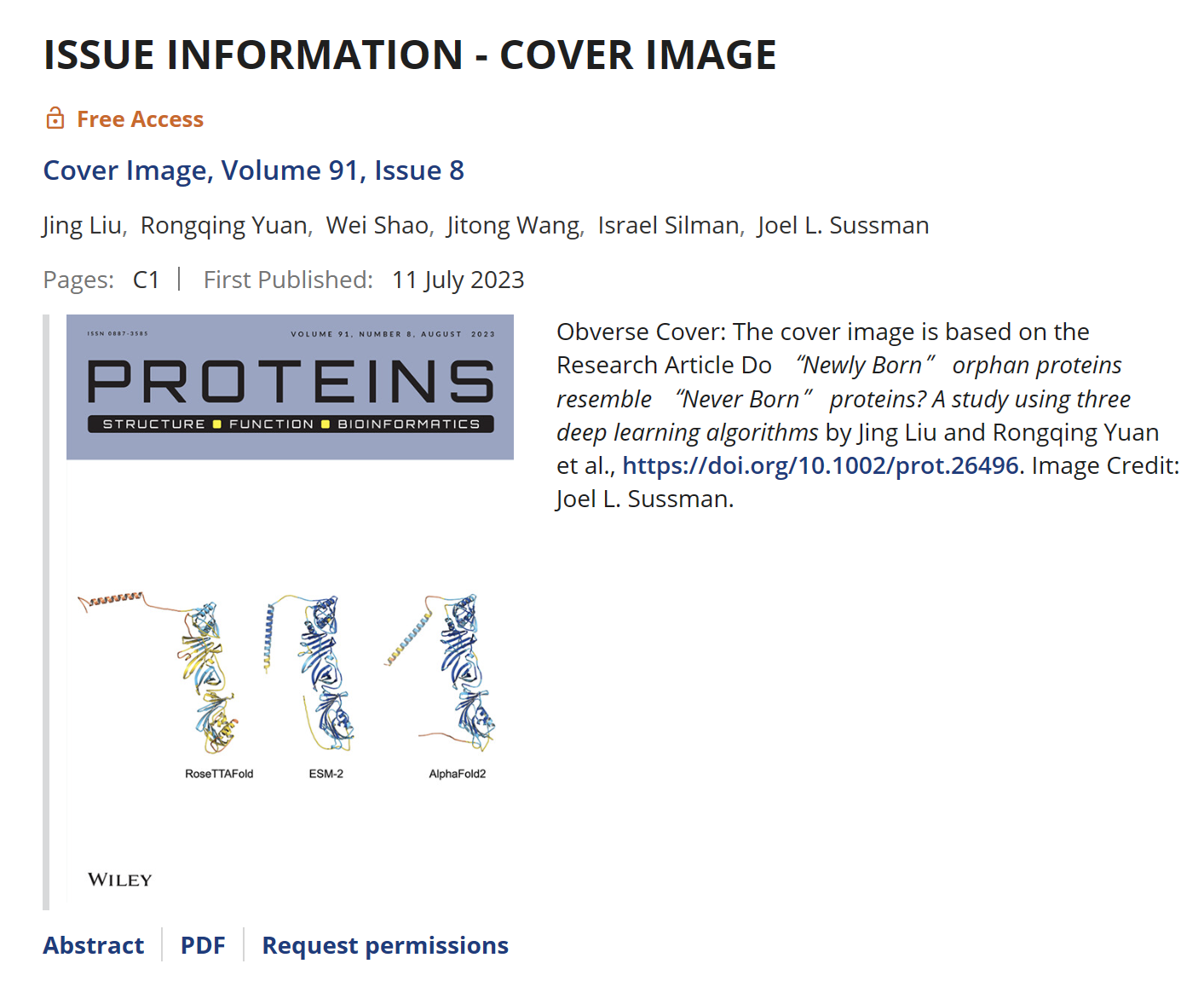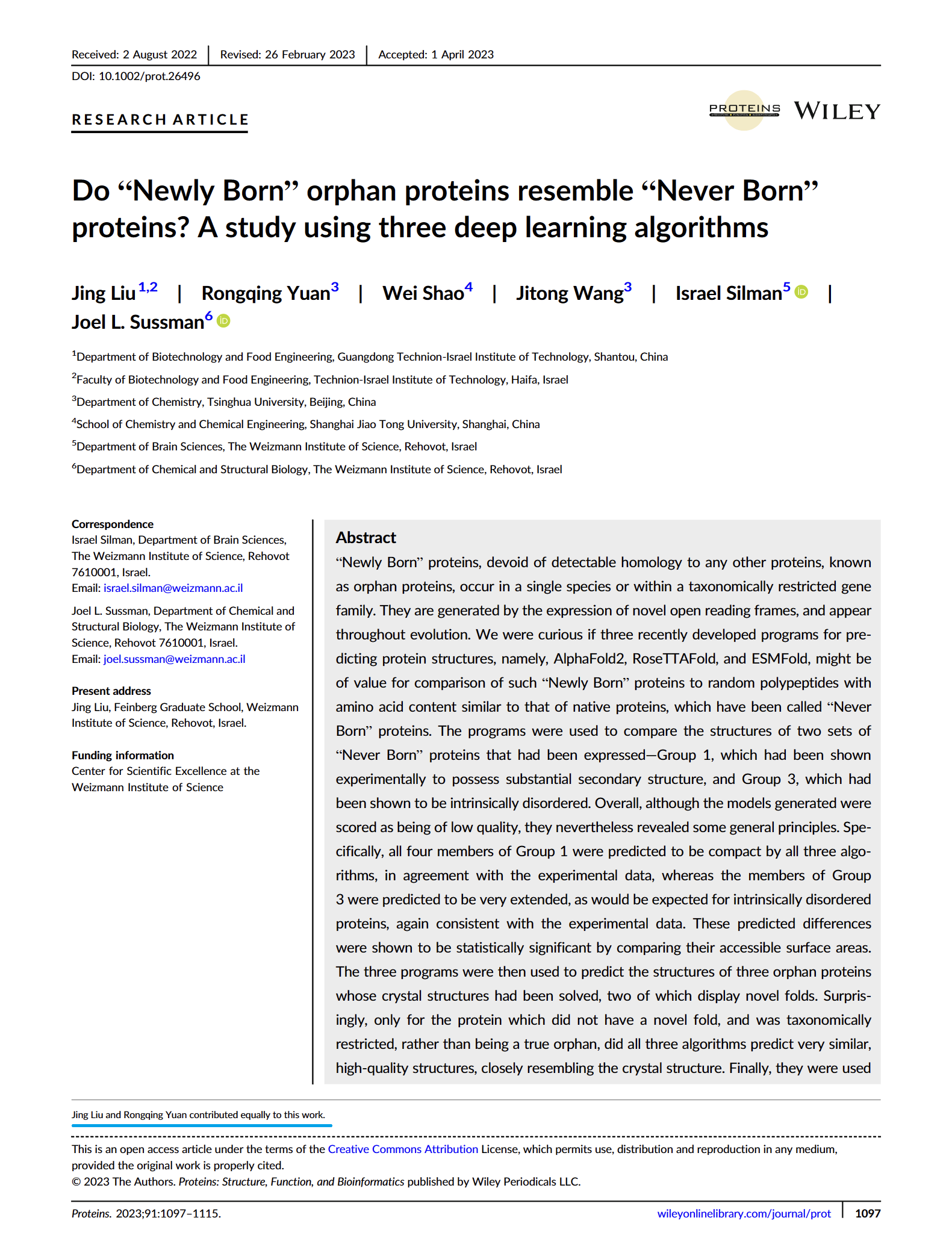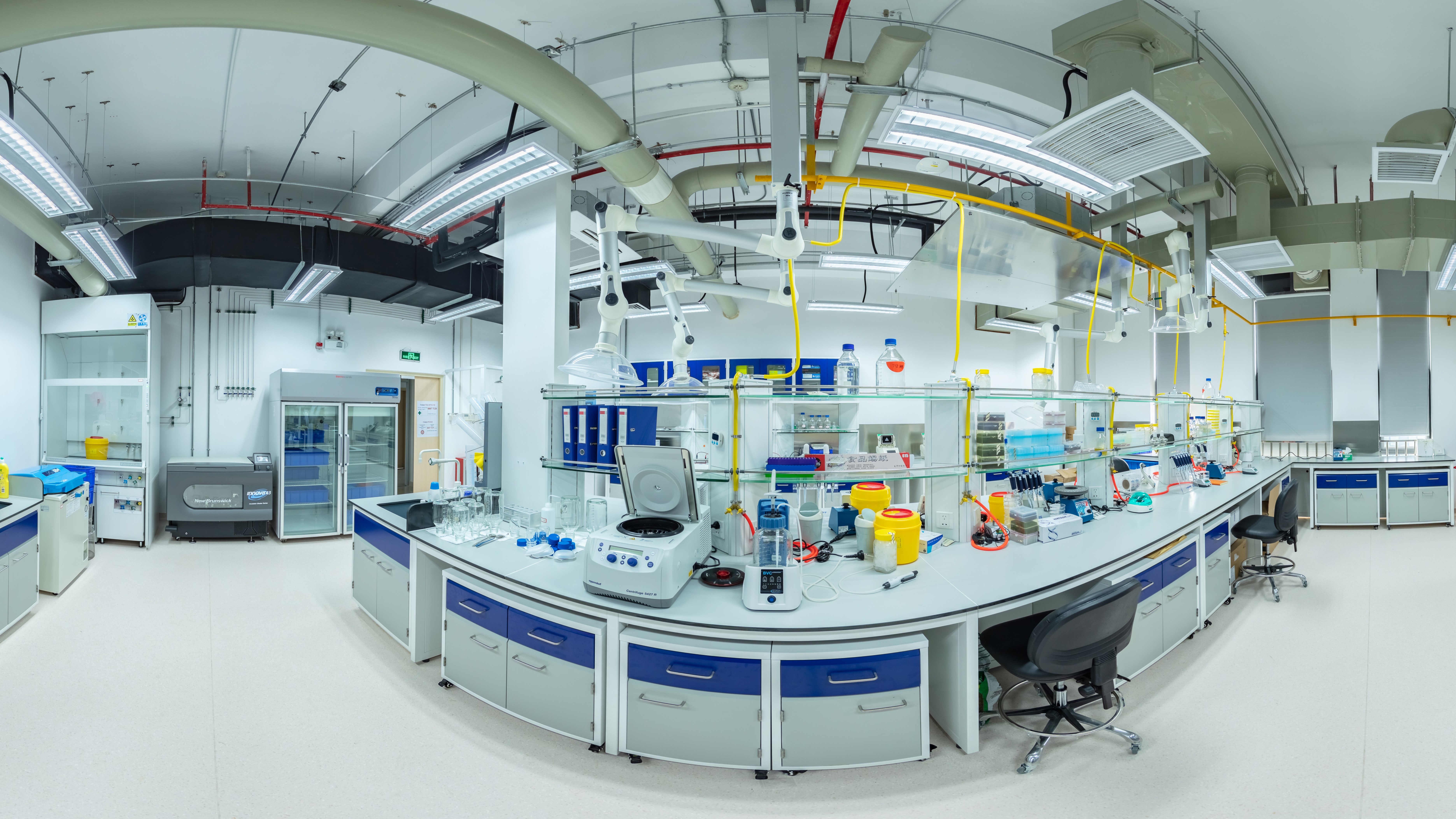PostTime:5/7/2024
Recently, Liu Jing, a 2018 GTIIT graduate and presently pursuing postgraduate study at the Weizmann Institute of Science, published a study titled Do “Newly Born” orphan proteins resemble “Never Born” proteins? A study using three deep learning algorithms”as the first author in a biology SCI journal: Structure, Function, and Bioinformatics. It was also selected as the cover. Yuan Rongqing graduating from the Department of Chemistry of Tsinghua University is the co-first author.
In the study, both of them led the team to explore the folding potential of “newly born” proteins (orphan proteins), using AI algorithms, which not only changed the understanding of how new proteins come into being, but also shined new light on evolutionary concepts. Meanwhile, the publication highlights the robust step of GTIIT graduates on the path of scientific research, and portrays the solid foundation GTIIT laid for innovative talents.

|Bold innovation using AI|
The research project began in 2022. At that time, Liu Jing, still a senior at GTIIT, got the competitive internship from the Weizmann Institute of Science after two rounds of interviews. A group of four Chinese students, including Liu Jing, were lectured by Profs. Joel Sussman and Israel Silman.
During the online course, Liu noticed a study by Czech scientists. After sharing it with the team, everyone was excited. The study shatters the long-held scientific consensus and reveals that new proteins can not only be born but may be crucial. Driven by strong curiosity, the newcomers in scientific research decided to investigate the newly born proteins under the supervision of the two tutors. To the best of their knowledge, it’s one of the first structural studies in this field.
The collision of different ideas triggered them to explore the folding potential of "orphan" proteins using three deep learning algorithms - AlphaFold2, RoseTTAFold, and ESMFold - and compared their findings.

The study selected seven orphan proteins and the AI tools indicated that five of the seven were compactly folded, while two appeared to lack a defined structure. The three algorithms made highly similar predictions about protein HCO_11565 – indicating a very high likelihood of accuracy – that the journal featured the three 3D structures on its cover.
Some orphan proteins have unknown biological functions, which could be exploited in many fields, such as cutting up plastics, generating clean energy, disease treatment, etc.

Liu Jing
Looking back, the biggest challenge was “idea”. "The hardest part is to find useful protein clues and connect small discoveries into a whole story in the face of mass information.” Liu said.
What comes next after idea is exploration, immersion, and persistence. She dived into the world composed of mysterious protein fragments, moving from traditional computational analysis to the latest deep learning algorithms, towards the wonders of scientific research.
The results do not matter so much to her. "Life itself is fascinating, and the process of research is the most interesting," said Liu.
|Dream nourished by GTIIT|
Obsessed with the flowers planted by her grandfather and the microscope gifted by her father, Liu's love for biology began when she was young. After the college entrance examination, she decisively chose GTIIT to pursue scientific research, adding that GTIIT fits in her expectation of pursuing further study overseas. Besides, the new and sophisticated instruments in labs also appealed to her.
The open and inclusive teaching mode at GTIIT fostered Liu's problem-driven mindset. "For example, in Advanced Genetics class, I would imagine which models would be useful if I were doing an experiment and how?” The reverse thinking links her "learning" to "using” and helped Liu fluently respond to the lab design questions in the Weizmann Institute of Science interview, finally bringing her the offer.
"The mentors I met in my undergraduate years were very willing to listen to me and discuss with me, unlike many of my friends' mentors in other universities," Liu said with gratitude.

GTIIT Lab
At the beginning of her junior year, Liu joined Prof. Xu Xinpeng's group on cell mechanics and fully experienced the joy of scientific research.
"GTIIT helped me develop a lot of basic scientific research abilities, such as how to find, read, and sort out literature, how to obtain critical thinking and design projects." With a solid undergraduate foundation, Liu now has more opportunities for independent scientific research as a postgraduate student. She will dig deeper into the field of biology and prepare for her PhD.

GTIIT Graduates
So far, there have been three graduates from GTIIT campus. They scattered around the world to pursue bigger dreams with the awe and love for scientific research. Four years at GTIIT nourished the minds of youth, allowing them to embrace more possibilities with a broader vision.
Looking ahead, GTIIT will continue to cultivate innovative talents and inject strong impetus into the national development of science and technology.
Text: GTIIT News & Public Affairs
Photos: Provided by Liu Jing, GTIIT News & Public Affairs
© GUANGDONG TECHNION-ISRAEL INSTITUTE OF TECHNOLOGY | 粤ICP备17036470号
